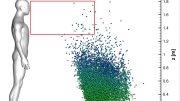
A study published in The BMJ has demonstrated the effectiveness of the Lee Silverman voice treatment (LSVT LOUD) for people with Parkinson’s disease, showing it to be more beneficial than conventional NHS therapy or no therapy.
New research reveals that the Lee Silverman voice treatment (LSVT LOUD) significantly improves speech and communication for Parkinson’s patients more than standard NHS treatments or no therapy, with noted benefits in life quality despite some reported vocal strain.
An intensive voice treatment developed in the USA and known as the Lee Silverman voice treatment (LSVT LOUD) is more effective than conventional NHS speech and language therapy or no therapy for people with Parkinson’s disease, finds a trial published today (July 10) in The BMJ.
The researchers say the results emphasize the need to optimize the use of speech and language therapy resources for people with Parkinson’s disease.
Slurred or slow speech (known as dysarthria) is a common feature of Parkinson’s disease and can have a significant effect on communication, potentially leading to stigmatization, social isolation, and reduced quality of life.
NHS speech and language therapy or Lee Silverman voice treatment (LSVT LOUD) are two approaches available in the UK, but evidence of their effectiveness is inconclusive.
Study Design and Initial Findings
To address this, researchers set out to assess the clinical effectiveness of these two speech and language therapy approaches versus no therapy for dysarthria in people with Parkinson’s disease.
Their findings are based on 388 people with Parkinson’s disease and dysarthria (74% male; around half aged 70 or older) who were randomly assigned to one of three groups from September 2016 to March 2020: 130 to LSVT LOUD, 129 to NHS speech and language therapy, and 129 to no speech and language therapy.
Comparing Therapy Outcomes
LSVT LOUD consisted of four, face-to-face or remote, 50 min sessions each week delivered over four weeks, plus home-based practice activities (5-10 mins daily on treatment days and 15 mins twice daily on non-treatment days).
NHS speech and language therapy sessions were determined by the local therapist in response to the patient’s needs (average of one session per week over six to eight weeks).
All participants self-reported a voice handicap index score at three months — a measure of the impact of communication difficulties on a scale from 0 to 120 (a low score being positive).
For patients who received LSVT LOUD, voice handicap scores were 8 points lower (ie, better) at three months than those who did not receive speech and language therapy and were nearly 10 points lower than those who received NHS speech and language therapy.
Trial Limitations and Long-term Results
There was no difference in voice handicap scores between NHS speech and language therapy and no speech and language therapy.
Some 93 adverse events (predominantly vocal strain) were reported in the LSVT LOUD group, 46 in the NHS therapy group, and none in the no therapy group. No serious adverse events were recorded.
Voice handicap scores at six and 12 months were similar to those in the main analysis. A clinically meaningful benefit was also seen in quality of life related to communication for patients receiving LSVT LOUD.
The researchers point to some trial limitations. For example, most participants were in the early stages of Parkinson’s disease with mild speech impairment, which may not reflect all people with Parkinson’s who need speech and language therapy. Trial blinding was also unfeasible, which may have influenced the results.
Nevertheless, they conclude: “This randomized trial provides evidence to guide clinical decision making, emphasizing the need to optimize the use of speech and language therapy resources for people with Parkinson’s disease.”
Editorial Insights and Future Directions
This trial shows convincingly that LSVT LOUD is the most clinically effective speech treatment for this patient group, say experts in a linked editorial.
However, they point out that the intensive nature of LSVT LOUD treatment poses access issues and has implications for service delivery, and they say further research is needed to support patients for whom LSVT LOUD is unsuitable.
“The challenges posed by this trial include how to ensure that resource limited health systems can implement effective evidence-based innovation, and how patient groups can best advocate for this with health system decision-makers,” they conclude.
Reference: “Lee Silverman voice treatment versus NHS speech and language therapy versus control for dysarthria in people with Parkinson’s disease (PD COMM): pragmatic, UK based, multicentre, three arm, parallel group, unblinded, randomised controlled trial” by Catherine M Sackley, Caroline Rick, Marian C Brady, Rebecca Woolley, Christopher Burton, Smitaa Patel, Patricia Masterson-Algar, Avril Nicoll, Christina H Smith, Sue Jowett, Natalie Ives, Gillian Beaton, Sylvia Dickson, Ryan Ottridge, Leslie Sharp, Helen Nankervis and Carl E Clarke, 10 July 2024, BMJ.
DOI: 10.1136/bmj-2023-078341
Funding: National Institute for Health Research, Health Technology Assessment program.









My legs felt like they each weigh 200 lbs. Moving was very hard for me. I figured it was the PD progression. I started a PD-5 programme about 4 months ago. I can now walk down the street and back daily. It doesn’t make the Parkinson’s go away but it did give me better quality of life. I got the treatment from naturalh erb scentre. com